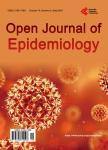Temporal Variations in Mortality after Liver Transplantation: Retrospective Investigation of Potential Risk Factors Using Propensity Score
Temporal Variations in Mortality after Liver Transplantation: Retrospective Investigation of Potential Risk Factors Using Propensity Score作者机构:Department of Internal Medicine King Saud Medical City Riyadh Saudi Arabia Department of Epidemiology and Biostatistics Schulich School of Medicine and Dentistry University of Western Ontario London Ontario Canada
出 版 物:《Open Journal of Epidemiology》 (流行病学期刊(英文))
年 卷 期:2023年第13卷第4期
页 面:250-259页
学科分类:1002[医学-临床医学] 100201[医学-内科学(含:心血管病、血液病、呼吸系病、消化系病、内分泌与代谢病、肾病、风湿病、传染病)] 10[医学]
主 题:Liver Transplantation Age Body Mass Index Renal Impairment Inverse Propensity Score Weighting
摘 要:Objective: We aim to detect over-time variations in mortality of liver transplant recipients stratified by the period of transplant. Since this is a retrospective investigation, bias reduction caused by possible confounding effects can be achieved by using propensity score weighting in a multivariate logistic regression model. Methods: Medical charts of all adult liver transplant recipients (n = 250) who were transplanted in three periods 2005-2009, 2010-2014 and 2015-2019 were retrospectively reviewed. The following recipient factors were analyzed: recipients and donors’ ages, sex, renal impairment, body mass index (BMI), presence of bacterial or viral infections, MELD (Model for end-stage diseases). Multivariate logistic model adjusted by Propensity Scores (PS) was used to identify the effect of the risk factors on mortality, and death within five years, in the targeted time frame. Patient outcomes are recorded as;(patient status = 1 if dead, or patient status = 0 if alive). Results: Meld score, recipient age, and renal impairments were shown to be predictors of mortality in transplanted patients. Multivariate regression model was used to identify the significance of the specified risk factors, followed by pairwise comparisons between periods. Pairwise comparisons between periods using logistic regression weighted by the inverse propensity score, correcting for the possible confounding effect of measured covariates showed that the death rate is significantly reduced in subsequent periods as compared to the initial period. Conclusions: The clinical implications of these findings are the ability to stratify patients at high risk of posttransplant death by planning more intensive and accurate management for them.



